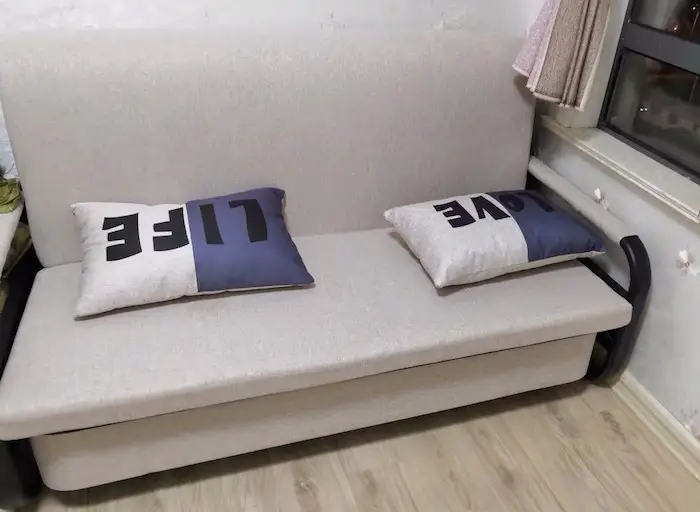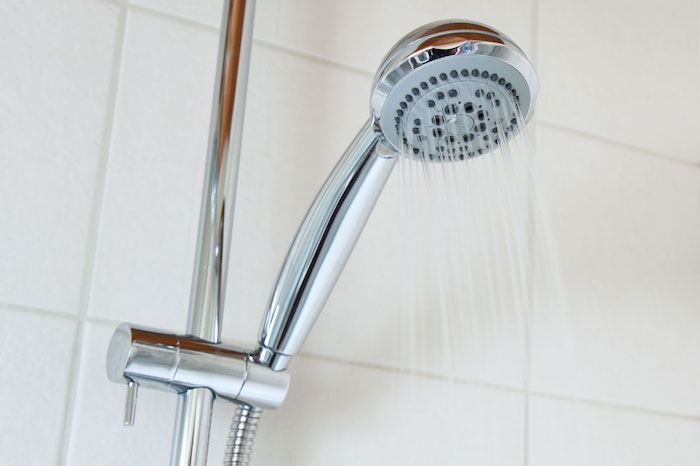Futon mattresses become firmer with time. Therefore, given the varying lifespan of a futon mattress it clear the longevity of the futon mattress is dependent on several factors. The two main factors are the material of the futon mattress and how you care for your futon Mattress.
So how long does a futon Mattress Last? The lifespan of a futon mattress is based on how long the mattress can be used before it loses its comfort benefits. The shortest longevity of a futon mattress is about 5 years. Some futon mattresses last for 10-15 years and others up to 20 years.
Keep reading to find out more about other factors affecting the lifespan of a futon mattress including your weight, the type of bed slats used and your profile. This article will also look at how care and other factors affect the lifespan of a futon mattress, how to expand the lifespan of a futon mattress, factors to consider when choosing a good futon mattress and other futon mattress related questions.
Lifespan
To start, the material of a futon mattress is dependent on the mattress ingredients. Ingredients are the primary determinants of the durability of a futon mattress. The ingredients consist of chemical compounds. They can be either memory foams or petrochemical-based foams.
The chemical ingredients breakdown with the time and cannot be restored. As such, if the ingredients break down fast, your futon mattress loses its comfort equally fast and vice versa. The lifespan for a memory foam mattress is 5 – 10 years.
Petroleum-based foams are less expensive compared to a mattress made of other ingredients like natural latex or coconut coir. As such, their lifespan is also reduced compared to that of the other expensive mattresses due to the presence of petrochemical fillers that break down fast. Therefore, mattresses made of 100% latex or organic latex have the longest life span.
Moreover, everything including mattresses lasts longer when taken good care of. Therefore, your regular care for your futon mattress (see reviews) will also contribute to its lifespan. If you do not take care of your mattress, it will not last for long, but if you do, you can be sure to enjoy its comfort for as long as it can offer.
Factors Affecting the Lifespan of a Futon Mattress
- How well You Look After Your Futon Mattress
Taking care of your mattress goes beyond the routine changing of your sheets. First, you need to constantly roll and turn your futon mattress. This helps to air the mattress and to restore the fibers of the mattress.
Another form of taking care of your mattress is by purchasing a mattress protector like this. It helps to prevent the mattress from absorbing moisture from your body.
Taking care of your futon mattress also includes not exposing it to light. For instance, a latex mattress will fall part due to exposure to light. Latex is light-sensitive and it quickly falls apart in the presence of heat and light.
It is recommended that you keep your latex mattress covered up. A well taken care of latex mattresses will last for up to 20 years. However, if not properly taken care of, it will fall apart in a short time.
- Your Profile
Your profile refers to generally how you sleep on your futon mattress as well as your body features. For instance, if you like to sleep on your side, the futon mattress should be fit to accommodate the shape of your hips for a woman and shoulders for a man.
Typically, men prefer firm mattresses that women. Therefore, the basis of your profile is heavily reliant on the gender basis. If you want your futon mattress to last long, consider the gender of the person that will be using it when selecting the mattress.
- Your Weight
The heavier you are the shorter the lifespan of your mattress. Therefore, when purchasing a futon mattress be on the lookout for its thickness depending on your weight.
- The Type of Bed Slats
Sprung slats increase the lifespan of your mattress because they evenly distribute your weight.
- Your Preferences
As mentioned above, the durability of a futon mattress generally refers to how comfortable the mattress is after use.
Therefore, since preferences of comfortable conditions differ, the durability of a futon mattress differs as well. For example, if you prefer a firm mattress, then the mattress will be durable to you for longer than a person who loves the feel of a new futon mattress.
All these factors contribute to the final decision of the lifespan of a futon mattress. They also double up as some of the factors to consider when purchasing a top-notch futon mattress.
How to Extend the Life of your Futon Mattress
- If you use your futon mattress as a regular bed, roll it up once a week preferably in the morning and unroll it at night. If you use the mattress while it is on the floor, you should do this after skipping a day. This ensures the futon maintains the feel and life throughout its use.
- Also, invest in a loose cover for your mattress to keep it pristine and new. The cover should be made of a washable fabric.
- Place your mattress on the deck or out in the sunshine to air out. This helps to dry any moisture that might have accumulated. To get rid of the moisture, you can also use a pad to absorb the body fluids trapped in your mattress.
Related Article: How To Deep Clean A Futon Mattress?
Factors to Consider When Purchasing a Futon Mattress
A futon is made of a futon mattress and a futon frame. Therefore, when purchasing a futon be on the lookout for the material of the mattress and the type of futon metal frame used.
The material of Futon Mattress
Futon mattress is made of the following materials
- Springs
Some futon mattresses have pocket coils or springs. The more the number of springs in a mattress, the higher the quality of the mattress. More springs mean an increased number of coils and a higher gauge.
In turn the higher the gauge of the spring, the more intense its resistance to sagging. This translates to a long-lasting mattress.
Apart from durability, more springs distribute your weight evenly, therefore, reducing the stress placed on a single spring. Therefore, if you are looking for a spring mattress, look for the one with many springs.
- Wool and Cotton
A futon mattress made of natural fibers is usually made of wool and cotton. To maintain mattresses made of wool and cotton, you should place them outside for air circulation and drying up from moisture accumulation
The air circulation is very helpful in keeping the mattress in shape. When exposed to the sun, the wool and cotton puff back from its compressed state during the night.
- Coconut Coir
If you are looking for a superior futon mattress with the longest durability, the coconut coir material will come in handy. The coconut coir is infused with latex, offering extra support and a long life span without sagging.
As mentioned above, to enhance its durability, do not expose a latex mattress to light
Types of Futon Frames
The following are types of futon frames you can choose from
- Metal Frame- Most metal frames come in silver or black color. Metal frames have a firmer foundation compared to wooden frames. They, therefore, last longer than wooden frames. Depending on the quality and type of metal, they can either be more expensive or cheaper as compared to wooden frames
- Wooden Frame– when purchasing a wooden frame (see my reviews), look out for maple or birch; they are the best wooden futon frames since they are solid hardwood frames. Solid hardwood frames last longer and provide better support. They also embody a classic look.
When using this frame, make sure that the distance between the slats is not too wide unless you want the mattress to sag. It is recommended that you space the slats with about 2.5 – 3 inches to allow the mattress to rest well.
Related Questions
What are the Disadvantages of Sleeping on a Futon?
To start, a futon mattress moves easily since it is not as heavy as a normal bed. As such, the bed can easily topple on one side when one is getting into the bed or out of the bed.
To avoid such scenarios, you can make sure the futon is placed next to a wall, rather supported by a wall. You can also place a mat or carpet underneath the futon.
Another downside to the futon is that it is not suitable for children. Children love to jump and frequently move on the bed. As stated, a futon is not as stable as a normal bed, therefore using a futon for children may expose them to potential physical harm.
To add to the disadvantage of a futon is its comfort. Although most futons are built to provide maximum comfort, the slats that hold the mattress could be a source of stress during sleep.
Continuous use of the futon could lead to back pain problems due to the slats. Therefore, if you have back problems, a futon may not be a good idea, especially for use every night.
Still, on the comfort provided by a futon, most futon mattresses are not firm after a long period. At least not as compared to the nature of normal beds. Therefore, if you are looking for a firmer bed to use for a long time, then a futon may not meet your specific needs.
Is a Futon Mattress the same as a Traditional Sofa Sleeper?
No, these two items are different. To start, a futon mattress converts into a bed and a coach easily using a conversion scheme built into the frame. As such, you use the same cushions to sleep and sit.
For a traditional sleeper, you will have to get rid of the cushion and pull the mattress, which is usually attached to the metal frame.
Second, the cover of the mattress and cushion in a traditional sleeper is dependent on the manufacturer’s choice. It is also fixed to the sofa’s frame and therefore cannot be changed. For Futon mattress, the users have the chance of choosing the cover and they can also change it if they want.
Looking at their weight, a traditional sofa is heavier and even difficult to transport through a staircase. A futon mattress, on the other hand, is lighter and can be assembled on site.
The futon mattress comes in different designs and can be easily customized. The traditional sofa is based on one design and does not allow for any customization.
Related Article: Average Futon Mattress Size (With Examples)


